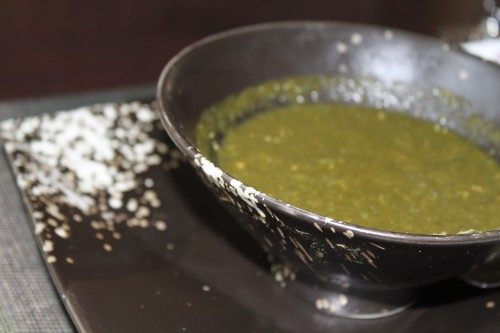Ethiopian Nit’ir Qibe
When I saw this article on ghee, I thought it might be interesting to talk about how to clarify butter. Clarified butter has long been synonymous with traditional Indian cooking, a delicious form of fat in which to fry up spices or brown onions. What was interesting in the article, though, was the inclusion of the spices in the bottled ghees, not typically done in an Indian household. Spicing clarified butter is actually an Ethiopian tradition, the resulting fat called nit’ir qibe.
Clarifying butter is relatively simple; butter is cooked at a low temperature until all of the water has evaporated and the milk solids have settled at the bottom. Decanted or strained, this liquid now becomes an excellent cooking agent, which, unlike whole butter, can withstand high temperature cooking (and is also great for dairy intolerance since almost all of the milk solids are gone).
In nit’ir qibe, butter is slowly melted. Once the foam subsides, certain herbs and spices are added and gently cooked in the butter at a low temperature for about 20 minutes. The clarified butter starts to take on the character of the spices, infused and aromatic – it’s completely delicious. The smell alone as I make it drives me nuts. It also keeps incredibly well, lasting in a sealed container in the fridge for about a month.
Garlic, ginger, fenugreek, turmeric, cardamom, sacred basil…all of these are typical in a spiced Ethiopian butter. Sometimes red onions are included, sometimes not. I’ve also seen dried oregano in certain homemade versions. This is again one of those traditions that differs from household to household – the secret recipe guarded for only the cook in the house to know.
Unlike ghee, this delicate and expensive infusion is not used for sauté purposes. It’s actually a finishing agent, added to an Ethiopian stew at the end of the cooking process to elevate and warm the flavor. I love to do a simply seared fish and spoon a bit of nit’ir qibe on top to lightly spice it. And that’s the beautiful thing about this: if you aren’t in the mood for something heavily spiced, this is a more subtle approach.
Lovely on plain rice. Warmed, a decadent dip for shellfish. Delicious on morning breakfast toast. Bumps up a grilled steak. The uses are endless…














